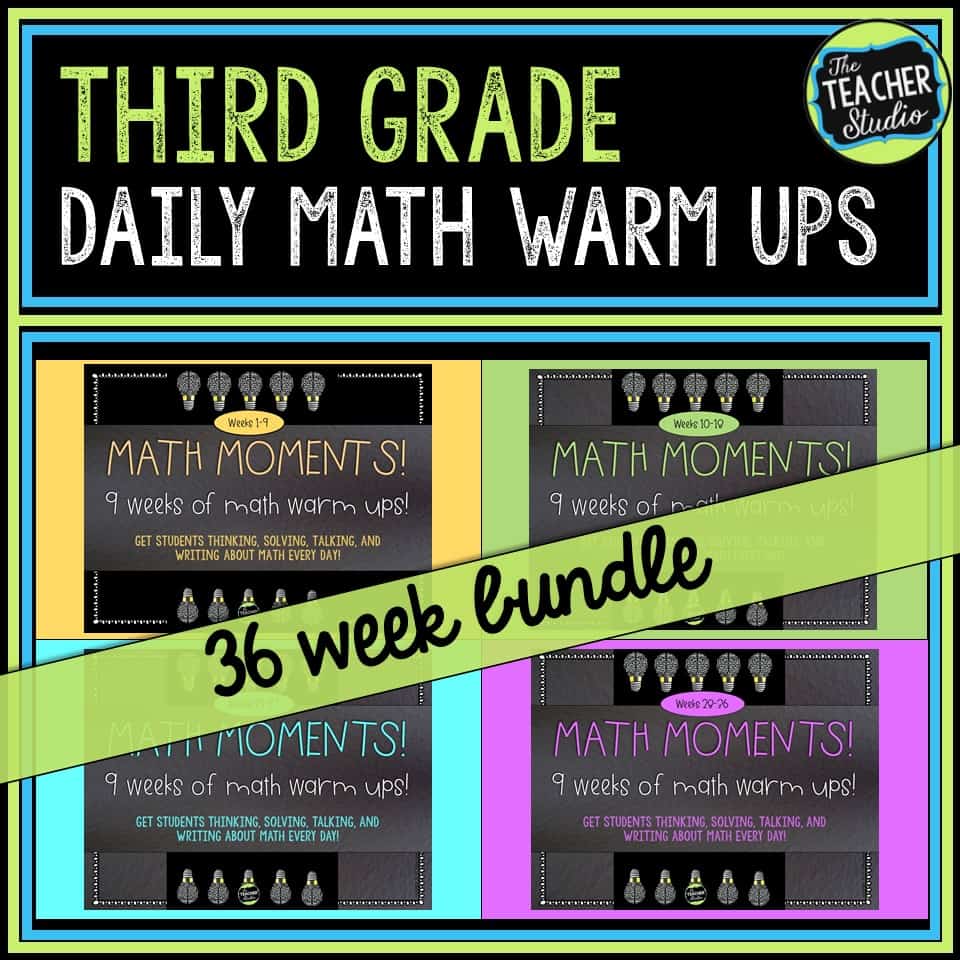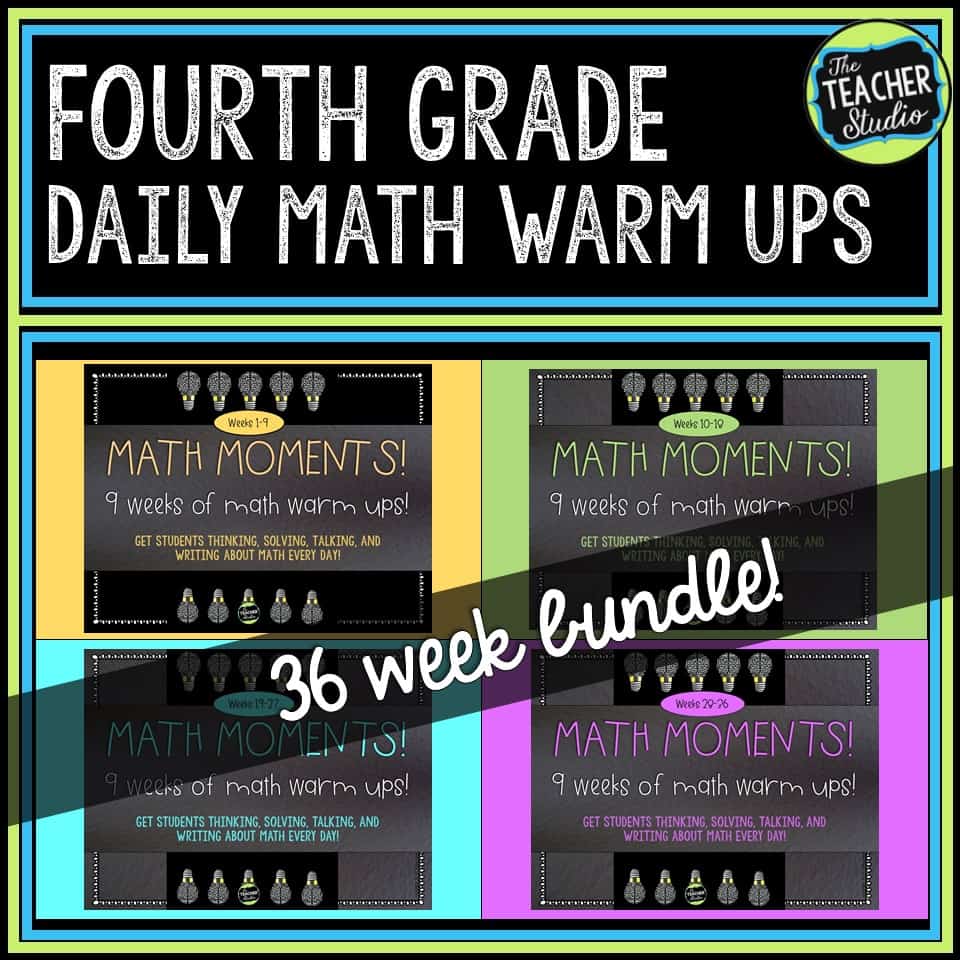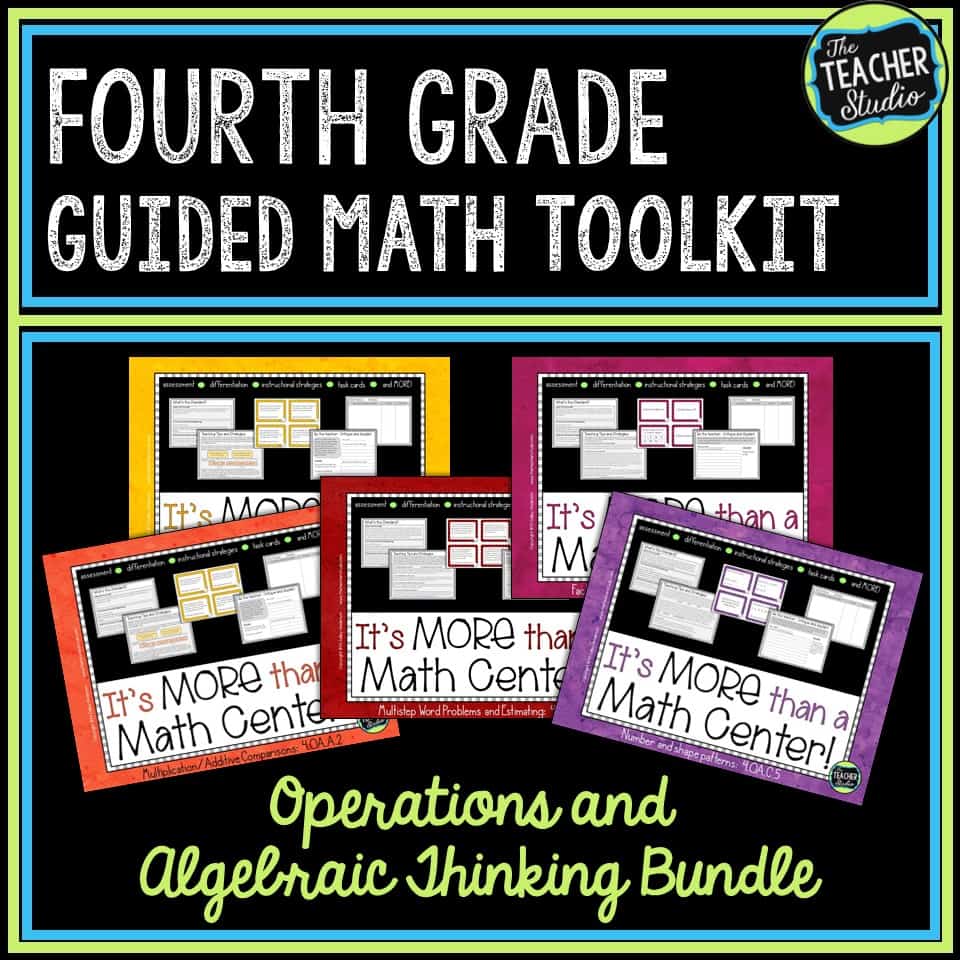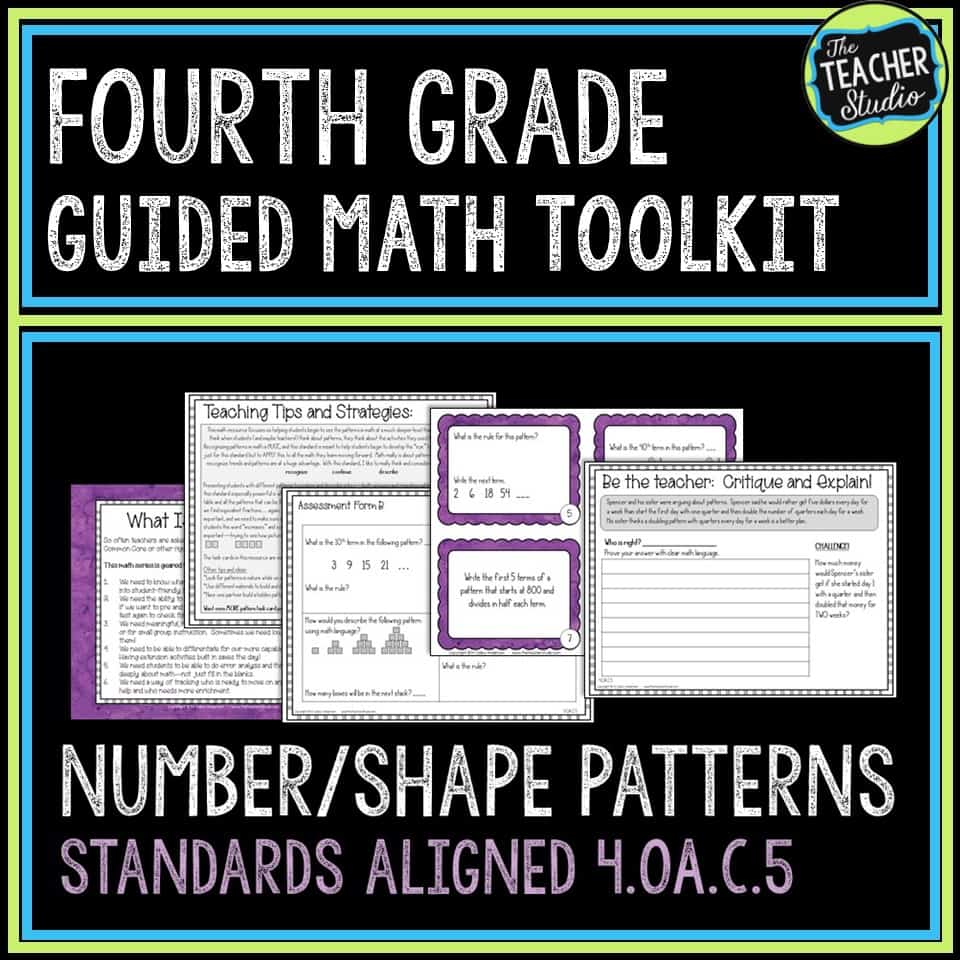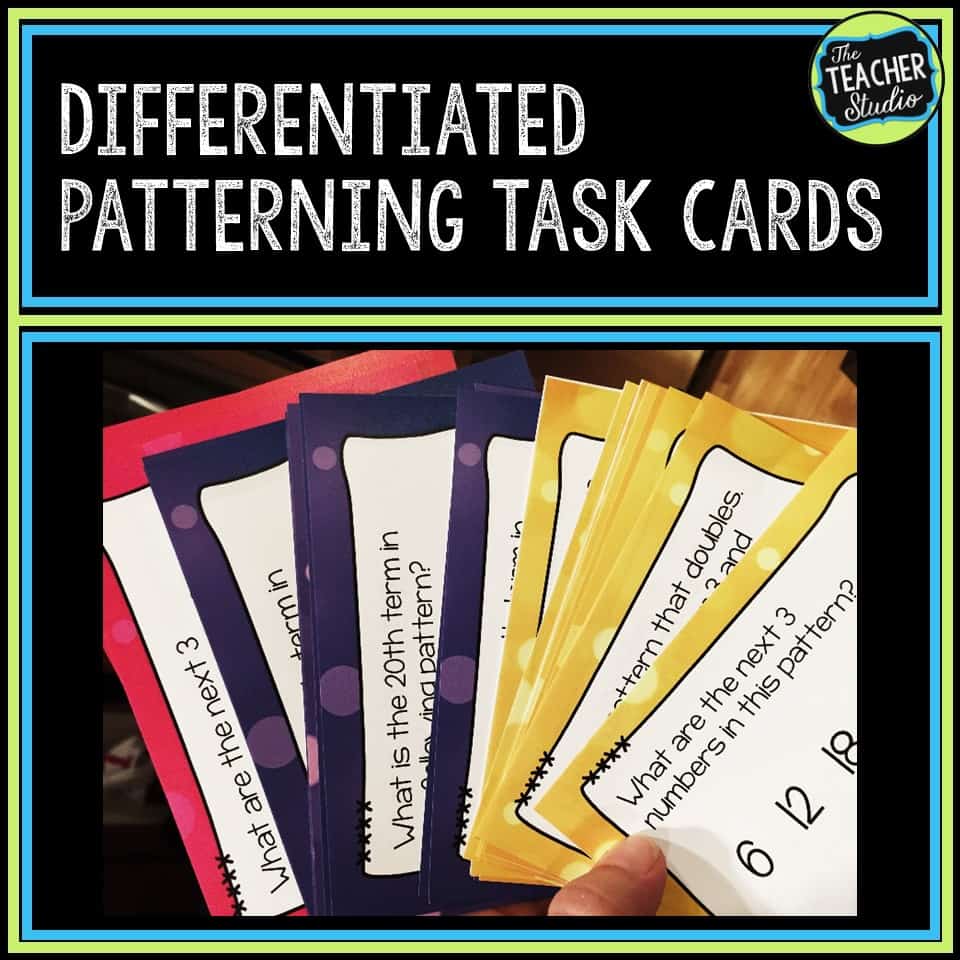
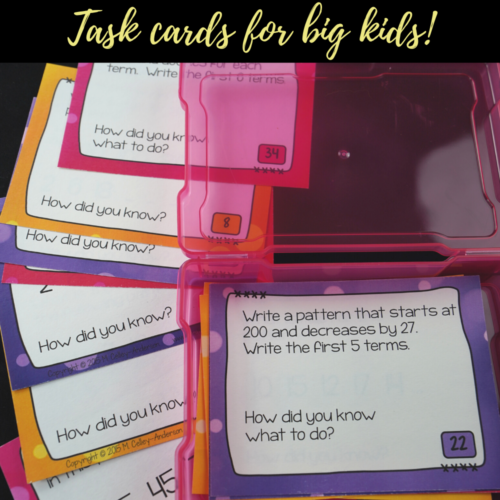
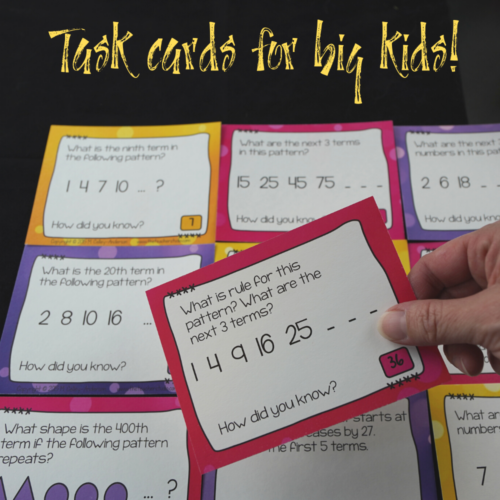
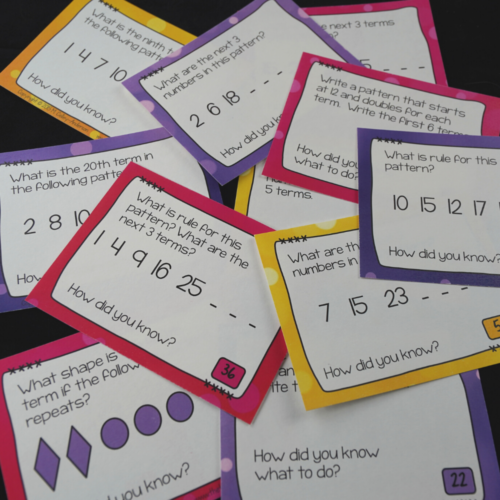
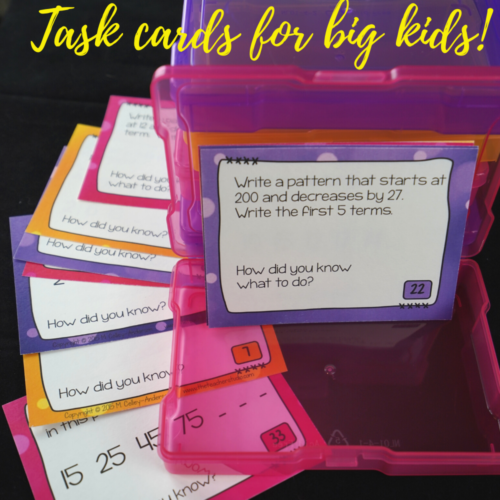
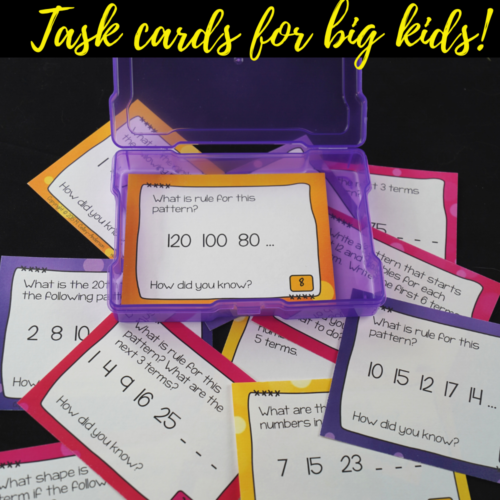
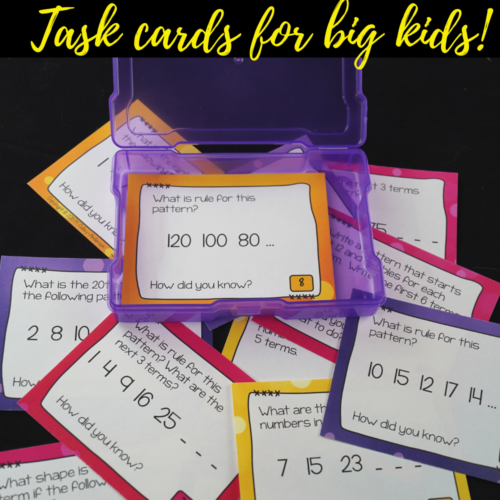
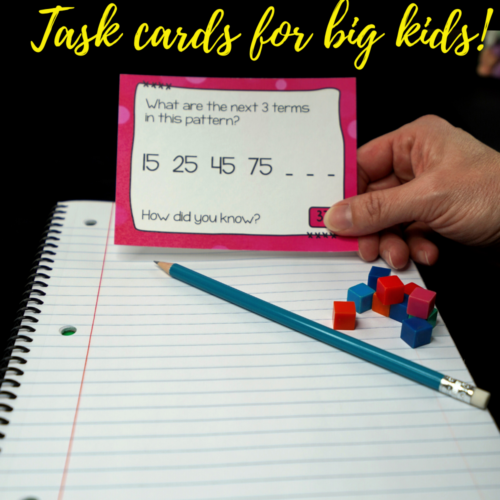
Why Teach Patterns?
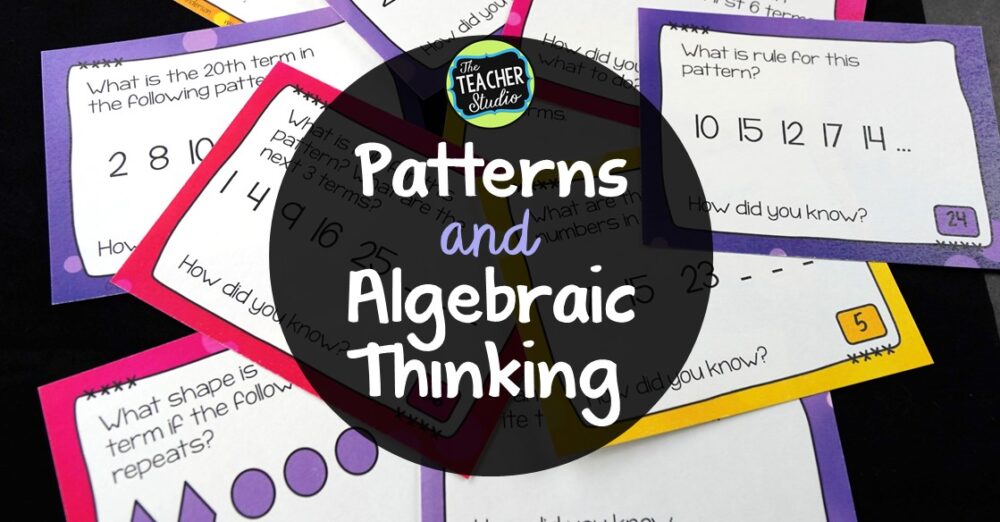
What Do the Standards Say?
Check out what the Common Core says about patterns and algebraic thinking. Other sets of standards have similar expectations.
Identify arithmetic patterns (including patterns in the addition table or multiplication table), and explain them using properties of operations. For example, observe that 4 times a number is always even, and explain why 4 times a number can be decomposed into two equal addends.CCSS.MATH.CONTENT.4.OA.C.5
Generate a number or shape pattern that follows a given rule. Identify apparent features of the pattern that were not explicit in the rule itself. For example, given the rule “Add 3” and the starting number 1, generate terms in the resulting sequence and observe that the terms appear to alternate between odd and even numbers. Explain informally why the numbers will continue to alternate in this way.CCSS.MATH.CONTENT.5.OA.B.3
Generate two numerical patterns using two given rules. Identify apparent relationships between corresponding terms. Form ordered pairs consisting of corresponding terms from the two patterns, and graph the ordered pairs on a coordinate plane. For example, given the rule “Add 3” and the starting number 0, and given the rule “Add 6” and the starting number 0, generate terms in the resulting sequences, and observe that the terms in one sequence are twice the corresponding terms in the other sequence. Explain informally why this is so.
Different Patterning Activities
Often we see younger students doing patterning “projects”. They may build with linking cubes. They may string beads on a cord. Many of their experiences are hands on–and these have value for older students too.
The reality is that we need to make sure our students can also apply this type of thinking to the upper levels of math as well. Think about all these topics where patterns can be studied (and this is just a start!)
- Addition and multiplication tables
- Doubling and halving
- Equivalent fractions
- Geometry and shape studies
- Measurement and equivalence
- And so much more!
Now, in addition to finding places in the curriculum to “hunt” for patterns, it certainly makes sense to help provide students with some explicit practice. I have a few ways I accomplish this.
- First, I incorporate patterning into my daily warm ups. (See post listed above for more about this)
- I explicitly teach patterning in a mini unit to help students recognize different types of number patterns (See THIS post about “unpacking” the algebra standards)
- I invite students ALL YEAR to answer the question, “Do you see any patterns in what are doing?”
- When I teach problem solving, I work to make connections with other types of problems.
What I strive to do is to give students countless math experiences to help them anchor new learning. I explicitly teach different patterning strategies and point out different math patterns in the hops that they will internalize this and begin to identify patterns on their own.
Looking for help?
If you are needing help (because let’s be honest, most math series do not help with this topic!), I have a few things that might be a support for you.
Doing a math warm up daily can get students talking and thinking about math and math patterns. Check out this ready-to-use math warm ups that can be used as a print resource, can be projected on a screen, or can be sent digitally. Click HERE for third grade and HERE for fourth grade.
Doing a mini unit on algebra thinking can be a great way to get students thinking in terms of patterns. If you need help unpacking these standards, this resource may help you do just that. There is one set that is explicitly about patterns, but the bundle can help you unpack the entire “Operations and Algebraic Thinking” standard. Check out the preview to see how this can help you get started teaching.
Finally, I have a set of differentiated pattern task cards that can be used as warm ups, as a cooperative math activity, or as a part of a math center or math workshop. I actually use these three times per year–one set at the beginning, one in the middle, and one toward the end of the year. See what you think!
I hope this post gave you a little food for thought about what we can do to help provide a strong math foundation for our upper elementary students!


